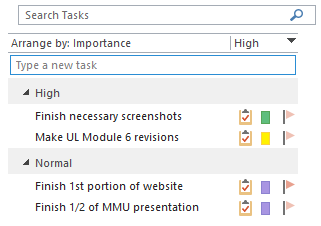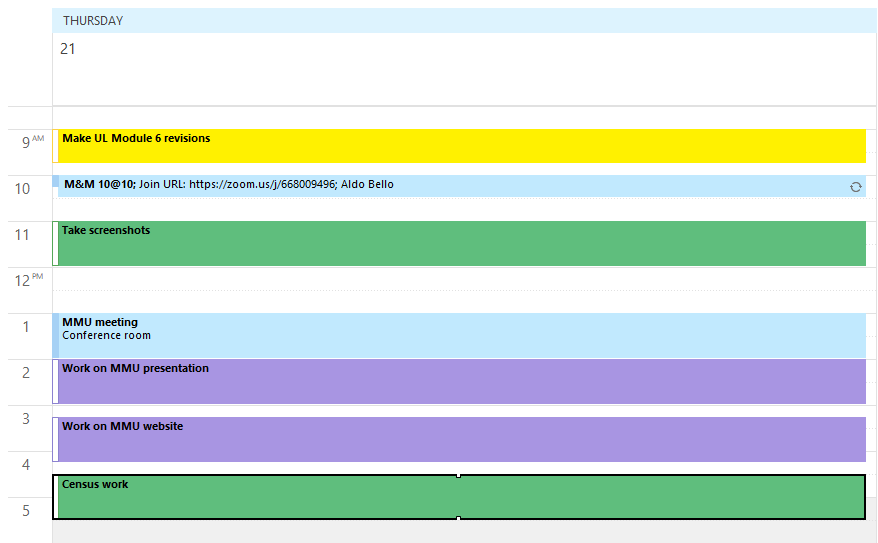Coping with Workplace Stress
Strategies to help you thrive at work
3/4 of workers believe they experience more job stress than a generation ago
1/4 of workers say their job is their #1 stressor
``It's not stress that kills us, it is our reaction to it.``
-Hans Selye
Take Control of Stress
Click on the coping strategies below to learn more:
Making Lifestyle Changes
Making lifestyle changes is probably the most difficult coping strategy to apply, because it is so difficult to break out of old habits. However, making positive changes to your sleep, exercise, and nutrition routines can be extremely effective in counteracting chronic stress.
 Improve your sleep
Improve your sleep
Getting 7-9 hours per night is no easy feat, but it’s essential for keeping stress levels down and productivity up. When we’re sleep deprived, we’re not only less alert, but also less capable of coping with stressful situations. You may find yourself in a sleep-stress cycle – when sleep deprivation leads to higher stress levels, and higher stress levels make it difficult to fall asleep. Turning off electronic devices 1 hour before going to sleep, and going to sleep at the same time every night can help break this cycle and get you back on track.
Move your body
Exercise is a great stress reliever. Regular participation in aerobic exercise triggers endorphins that help decrease stress, improve sleep, and stabilize your mood. If you don’t have time to hit the gym or want to start small, as little as five minutes of exercise a day can be beneficial in alleviating stress.
Here are some ideas of exercise you can do when there’s no time for the gym:
- Go on a 10-minute walk or run during a break
- Practice 15 minutes of yoga during lunch
- Do a 20 minute circuit workout before or after work
(If you type “20 minute workout” into the YouTube search bar, there are literally thousands of free workouts you can find!)
Improve your nutrition
Nutrition is also an important consideration during periods of stress. Because stress hinders your immune system, it’s important to consume enough fruits and vegetables to nourish your body with immune boosting vitamins. Limiting foods that cause your energy levels to crash, like sugar and caffeine, can also be beneficial in reducing stress levels, and stabilizing your mood. Additionally, proteins and healthy fats can help keep your blood sugar levels stable, leading to less mood swings and higher energy – leaving you equipped to cope with stress.
Changing your thought patterns
When it comes to stress, and really any situation, our perceptions create our reality. When you think negative thoughts, your situation becomes more stressful. The opposite happens when you think positively. The good news is that we can put in the effort to intentionally change our thought patterns and decrease our stress through cognitive restructuring.
Cognitive restructuring is when we identify, and then challenge, negative and stress inducing thoughts.
How can we apply cognitive restructuring at work?
When you find yourself feeling overwhelmed at work, be mindful of your thought process. Recognize when your thinking becomes negatively distorted.
Check yourself by asking things like:
- Is this thought an automatic thought? Why did my brain go there?
- What concrete evidence do I have in support of this thought? What evidence do I have against this thought?
- What is another way someone could perceive this situation?
Once you have asked these questions, reevaluate your original thought in a fair and balanced way.
Here is an example of how someone might use cognitive restructuring in the workplace:
I have so much work to do, there’s no way I can get it all done, I’m going to disappoint this client.
Now let’s restructure this thought to be positive, while realistic:
I have a lot of work to do, but this is a great opportunity to prove my quality of work to this client.
A simple change to the original, stress inducing thought can completely change one’s perception of the situation:
- Instead of being a chance to fail, it becomes an opportunity to succeed
- Rather than evoking fear, the thought now evokes excitement and motivation
- Instead of a downward spiral of negativity, it becomes a balanced, evidence-based statement
There are plenty of factors we can’t control, but we are in charge of our minds. The next time you’re feeling stressed, give yourself a check and correct when your thinking becomes negatively distorted.
Remember, “The greatest weapon against stress is our ability to choose one thought over another.“ – William James



 Here are some tips to get the most out of your break:
Here are some tips to get the most out of your break: Tasks
Tasks
